Want to build a PC today? We just launched the ultimate AI PC Builder and it’s absolutely free to use. You don’t need to worry about which parts are compatible – the tool makes it easy to build the PC of your dreams, even if you’re a noob.
BUILD GUIDES
In the following section, we will answer your most common questions about building PCs. This is not an exhaustive list; you are encouraged to drop your questions in the comment section on any aspect we did not cover.
So, let’s get to it.

Some components for building a desktop PC
RELATED ARTICLE

Best 24″ Monitor for various purposes – Full Review
Take your pick of the best 24-inch Monitors for gaming, productivity, and every other thing you can think of…
Can I be able to build my PC by myself?
Yes. You can. There was a time when computers were mysterious and only the nerds got to look inside. Not anymore these days. Building your own computer has become so easy that a 10-year-old can do it, and there are many reasons why you should build your PC.
This is because computer components are much easier to install nowadays, thanks to better design standards. Also, there are guides readily available, such as the one you are reading now, that make it easier to follow step by step as you build your PC.
The only thing that can stop you from building your PC is you. Yes… If you decide you can’t, then you really can’t do it. It’s simply a matter of willpower, some guts, and patience, and you’re on your way to building your first rig. You can continue reading or simply jump to the step-by-step guide on how to build a PC.
What do I need to build my PC by myself?
There are just 3 things you need to build a PC by yourself…
- The PC components
- Some basic tools
- Some determination and patience
PC COMPONENTS
Here we break down exactly what different components make up a PC. It’ll help you to get familiar with the parts of a PC. After all, you’re going to build one, so you might as well understand how the different parts of a PC work together to get things done.
Let’s start with the core components: The Processor, Motherboard or Mainboard, the RAM, the Graphics Card, the Hard Drive, the CPU Cooler, the Power Supply Unit, the Optical Drive, and PC Case. The peripherals include the Monitor, Keyboard, and Mouse.
THE PROCESSOR
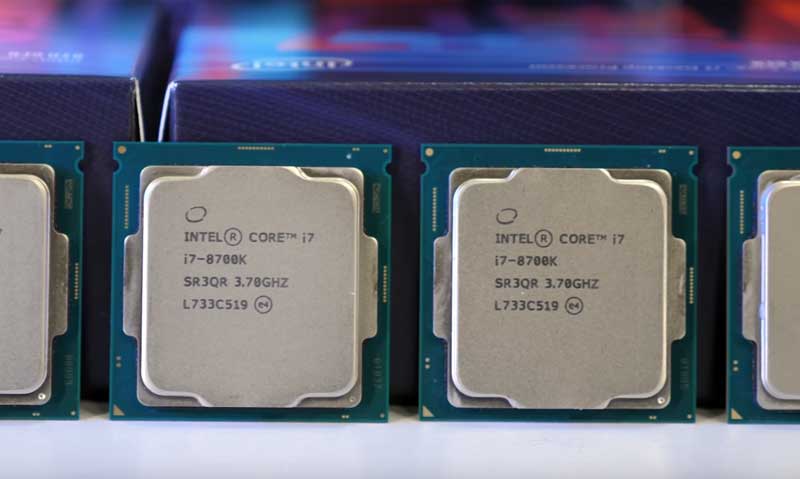
Desktop processors
The processor, or Central Processing Unit (CPU), is the main processing unit of the computer, that coordinates all operations that take place inside the PC, such as input and output. The processing power is described in clocks, or clock speed, and is measured in Hertz.
A processor can perform complex mathematical calculations at an extremely fast rate, or frequency. A typical modern processor can perform millions of these operations per second and has clock speeds in the region of 1.5Gigahertz (1.5GHz) to 5GHz.
CORES AND THREADS
CPUs usually have cores or processing units. This means a CPU can be multi-core or single-core. A dual-core CPU has two physical cores or processing units. A quad-core CPU is made up of one processor chip and four physical cores.
Another important feature of processors is threading, which essentially splits a core into two logical or virtual processing units. What this means is that a quad-core CPU with multi-threading will have 8 threads or processing units.
Not all processors support multi-threading, though. In most cases, the multi-threading feature is listed on the box.
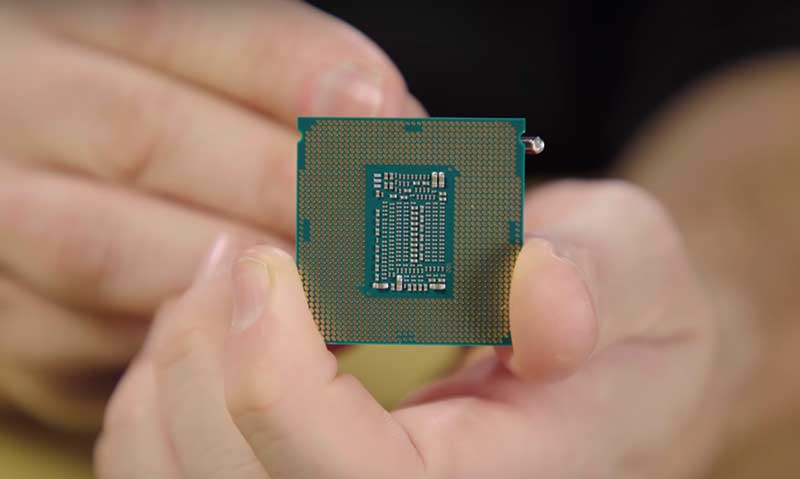
Desktop processor showing the contact pins
CACHE MEMORY
Processors usually have what we call cache memory. This is a special type of ultra-fast memory for handling operations inside the CPU circuit.
Cache memory is designed to store program instructions and data that are being processed by the CPU, which the CPU is likely to need next. So, instead of having to retrieve this data from the system’s main memory or RAM, the processor quickly fetches it from cache memory.
This way, the efficiency and effectiveness of the computer are enhanced. Cache memory is usually in megabytes (MB). The larger the cache memory of a processor, the more powerful and faster it is.
POWER
Another factor you should know is the power rating of a CPU, or what we call Thermal Design Power (TDP). The TDP of a CPU goes a long way in determining the cooling options you should install. For example, a CPU with higher TDP will usually provide more in terms of raw performance, but will ultimately consume more electricity. Technically speaking, TDP is not a direct measure of how much power a component will draw, but it can be a good indicator.
A PC processor produces heat, mainly because of the calculations it crunches. This makes cooling inevitable, and you have two options; air cooling and liquid cooling. Air cooling is usually provided by fans mounted on the CPU, while liquid cooling depends on water in a closed system that actively cools the CPU.
MANUFACTURERS
There are two major CPU manufacturers, Intel and AMD. Intel processors used to be strong on single-core performance in terms of raw processing power. Their processors are generally more expensive than AMDs. On the other hand, AMD processors are generally strong on multi-core performance, though recent releases have overtaken Intel in terms of multi-core performance compared to price.
HEAT ISSUES
As is common with every electrical/electronic device, heat is produced as a by-product of power utilization. Processors generate lots of heat energy, that is, alongside their data-crunching role.
With respect to heat, previously, AMD processors were poor in power efficiency, due to the way they are engineered. However, in recent times, AMD processors have better-improved power efficiency, resulting in lower heat output.
When buying a processor, you should bear these things in mind, apart from the purpose for which you are building a PC.
RELATED ARTICLE

Best Wi-Fi Routers for streaming and Gaming
We review the best routers you can get right now for streaming and gaming
THE MOTHERBOARD

The motherboard, or mainboard of a PC, is the part that holds every other part together. Several ports/sockets allow you to plug in several components that enable the PC to function.
A motherboard is usually composed of the PCB (Printed Circuit Board) on which you have the complex electronic circuit and different sockets, switches, and ports for the different PC components. On the circuit board proper, you have the Northbridge and Southbridge chipsets, the cache memory, and also the BIOS chip and battery for regulating the system’s internal clock.
Motherboards are classified according to their form factor, known as ATX (Advanced Technology eXtended). For instance, there is ATX, EATX, mini-ATX, micro-ATX, nano-ATX, etc.
Motherboards are also classified according to the CPU socket type. For instance, there is LGA 775, LGA 1150, LGA 1155, LGA 2011, LGA 1200, etc. (LGA means Logical Grid Array). The number represents the number of contact points or pins on the processor socket.
A typical motherboard has a CPU (Central Processing Unit) socket for the processor, a RAM (Random Access Memory) slot for memory, IDE (Integrated Drive Electronics) ports for connecting IDE devices, SATA (Serial Advanced Technology Attachment) ports for connecting SATA devices such as hard drives, DVD drives, and Solid State Drives.
There are also USB (Universal Serial Bus) ports, PCI (Peripheral Component Interconnect) express ports for connecting graphics cards, M.2 ports for the latest class of storage devices, power connectors for the different devices, and audio in/out ports for audio devices.
A motherboard is a complicated device that should be handled with extra care, especially during installation. Some major motherboard manufacturers include Gigabyte, ASUS, MSI, ASRock, Intel, Biostar, etc.
When buying a motherboard, note the form factor, the RAM type, and the CPU socket; those are the three most important factors, apart from the price. Most of the motherboards in the market are designed especially for gaming, except for a few exceptions.
The motherboards designated as gaming motherboards are more rampant. This is because the gaming industry is huge, and has given rise to specialized hardware. You should understand that even though such motherboards are termed ‘gaming motherboards’, they are also useful for other applications like, say video editing. Always have these in mind.
THE MEMORY (RAM)
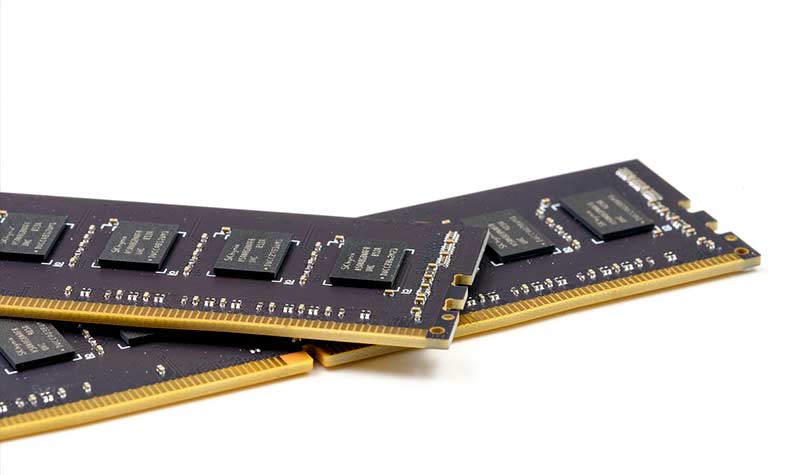
RAM chips
RAM is fast, temporary and volatile memory that the PC uses to store data being processed by the processor. RAM usually comes in modules or sticks. RAM sizes are usually a multiple of 2, i.e., 2GB, 4GB, 8GB, etc., though there are exceptions to this rule.
Data stored in RAM is lost if there is a power cut, that is why data needs to be transferred to permanent memory, in this case, the hard drive or external storage devices.
RAM types differ, but the most popular is DDR (Double Data Rate) Memory, which is numbered according to its generations, like DDR2, DDR3, DDR4, etc. Each iteration is faster and features higher frequencies and larger capacities than the previous generation.
If you are building your PC, you need to buy matching RAM for the motherboard, because each motherboard is limited to a certain quantity of RAM and also the type of RAM, whether DDR3 or DDR4.
Some manufacturers of memory modules include Corsair, Kingston, G.Skill, OCZ, Hynix, Transcend, and Mushkin.
Additionally, you need a specific minimum size of RAM for the particular purpose of building a PC, such as for gaming, 3D rendering, Video Editing, etc. We’ll cover these aspects as we proceed.
THE GRAPHICS CARD

A desktop Graphics Card
Also known as the GPU (Graphics Processing Unit), this is responsible for processing graphics and image data, and relaying the same to an output device, such as a monitor. The graphics card has become a specialized piece of equipment for the PC and has spawned a whole new industry that is a subset of the PC industry.
The memory on a graphics card is a special type of memory called GDDR RAM (Graphics Double Data Rate Random Access Memory), and it comes in various sizes. It is designed to handle graphics data being processed by the GPU processor. Just like PC RAM, it also comes in multiples of 2, e.g., 2GB, 4GB, 8GB, etc., though there are instances of exceptions in some brands.
Graphics RAM usually comes in generations like GDDR3, GDDR5, and GDDR6. As with PC RAM, each succeeding generation is much faster, with higher bandwidth and memory, than the previous ones. Recently, HBM (High Bandwidth Memory) was launched, which featured cards with much higher bandwidth than GDDR5.
Graphics cards come in various sizes, brands, memory configurations, purposes, and prices. Nowadays, we have specialized graphics cards for running heavy computations that a PC processor is not capable of running alone, such as simulations, image rendering, and even Artificial Intelligence (AI) for self-driving cars.
The two major GPU giants are Nvidia and AMD, and their cards are marketed by brands such as EVGA, Gigabyte, XFX, ASUS, Zotac, PNY, MSI, Palit, and others. Intel has launched their GPU brand, codenamed the Arc series. There’s nothing exceptional about these cards. They perform just as good as their AMD and Nvidia counterparts.
When buying a graphics card, you must take into account your needs, such as the main purpose of the PC and your budget. You may not even need to buy a dedicated graphics card in some scenarios, which you’ll find out shortly. That means you can either rely on the integrated graphics on the processor or get one of the best budget graphics cards.
RELATED ARTICLE

Best Laptop for Solidworks
We review 12 Laptops for engineering and CAD workflows. Full buying guide
THE HARD DISK
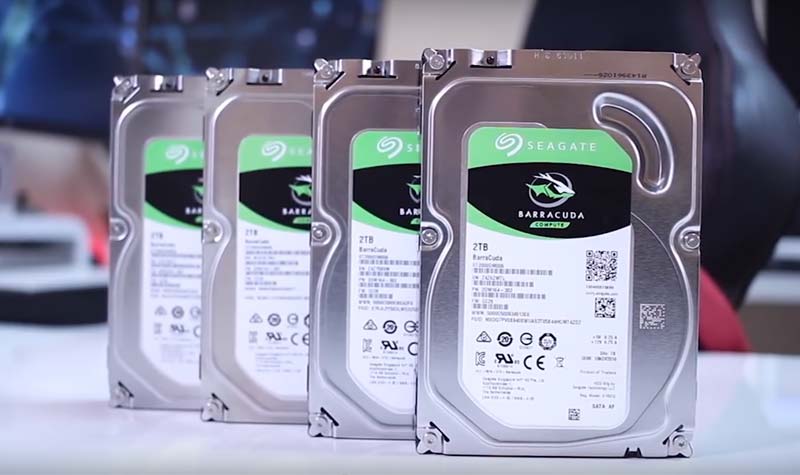
Desktop Hard Drives
This is the main storage device of the PC. It features permanent, non-volatile memory. It’s not as fast as RAM, but it holds data permanently.
Hard drives are mechanical storage devices, unlike RAM, which manipulates data electronically. This is the main reason for RAM volatility. Mechanical hard drives are simply a collection of constantly spinning electromagnetic disks and platters that are used to access the stored data.
Hard drives or disks come in various sizes, which range from gigabytes to terabytes. A few years ago, hard drives used the IDE interface to connect to the motherboard, but today, SATA is the preferred interface connector.
There are new technologies such as SSDs (Solid State Drives) and M.2 drives. Both utilize solid-state technology in storing and accessing the data. They are much faster and more reliable and consume less energy than traditional mechanical hard drives. The only downside is the cost, which is much higher (SSD prices have been on a downward spin in recent years).

An SSD Drive
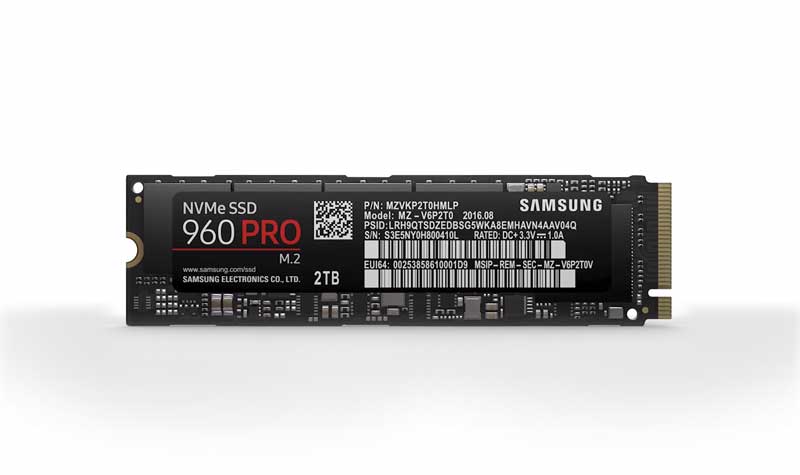
An M.2 NVme drive
Ideally, it is advisable to use an SSD drive as the operating system drive (Boot Drive), which also holds your applications and a traditional mechanical hard drive as permanent storage for your files.
The major manufacturers of mechanical hard drives include Seagate, Western Digital, HSGT, and Toshiba. For SSDs, major brands among others include Samsung, Crucial, OCZ, Corsair, ADATA, Kingston, Silicon Power, Mushkin, and Western Digital.
THE CPU COOLER
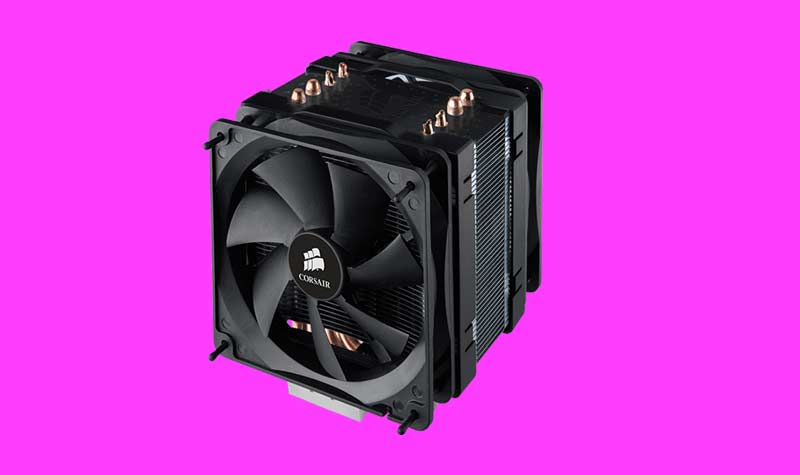
This is a special cooling device for the processor. The cooler is important because it does the task of cooling the CPU, which releases copious amounts of heat due to its operation.
CPU coolers come in two forms, air coolers, and liquid coolers. Again, you need to determine the type of cooler you need, whether liquid or air. You should use a liquid cooler only if your processor is going to be seriously overclocked (more on overclocking shortly).
Major brands include NZXT, Noctua, EVGA, Corsair, Thermaltake, Cooler Master, and Enermax.
POWER SUPPLY UNIT
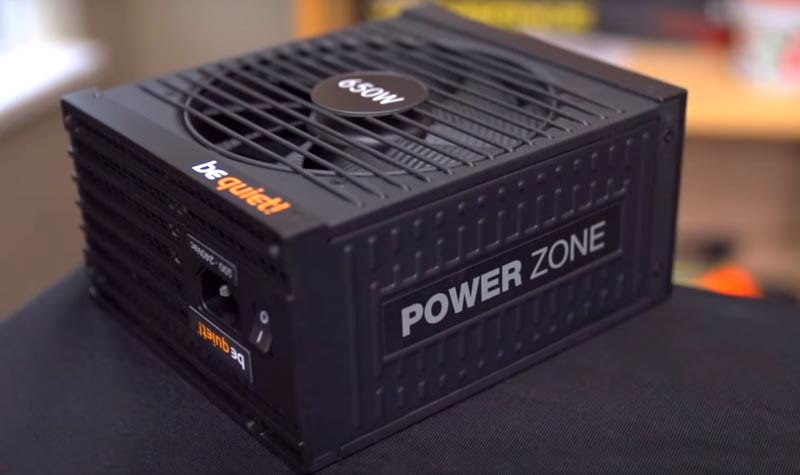
The Power Supply, or PSU, is responsible for distributing power to all the components attached to the motherboard.
Power Supply technology has improved tremendously in recent years, with improvements in design and efficiency. Today, we have modular power supply units that allow you to attach only the cables you need, thereby reducing clutter and improving airflow.
As with other components, there are scores of brands including EVGA, Seasonic, NZXT, XFX, Thermaltake, Antec, Corsair, and others.
THE OPTICAL DRIVE
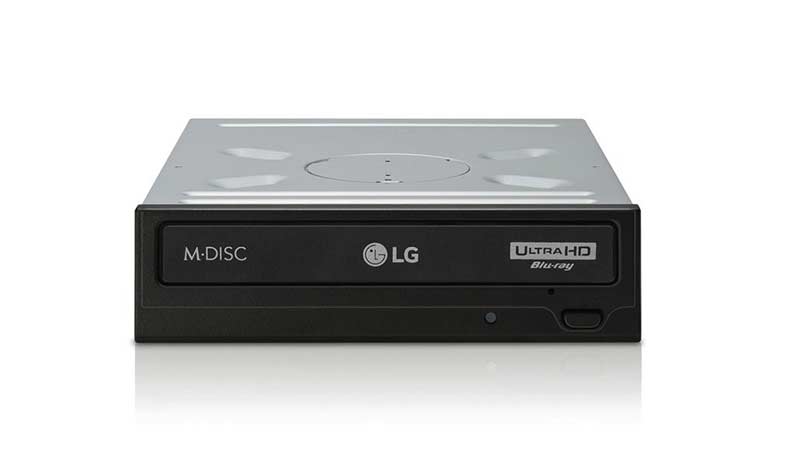
Though this component is gradually going out of fashion, because of the preponderance of digital downloads, it is still relevant today. The optical drive has come a long way, from the older CD drives to DVD drives and lately, Blu-ray drives.
The optical drive allows you to transfer your data to an optical storage disc, such as a DVD or Blu-ray. You can connect one to the motherboard using a SATA interface cable. Major brands include LG, Samsung, Lite-On, and ASUS. When building your PC, you may decide not to include an optical drive, but that depends on your needs. If you are going to use your PC for media production, such as video editing or photography, you sure need one.
THE PC CASE
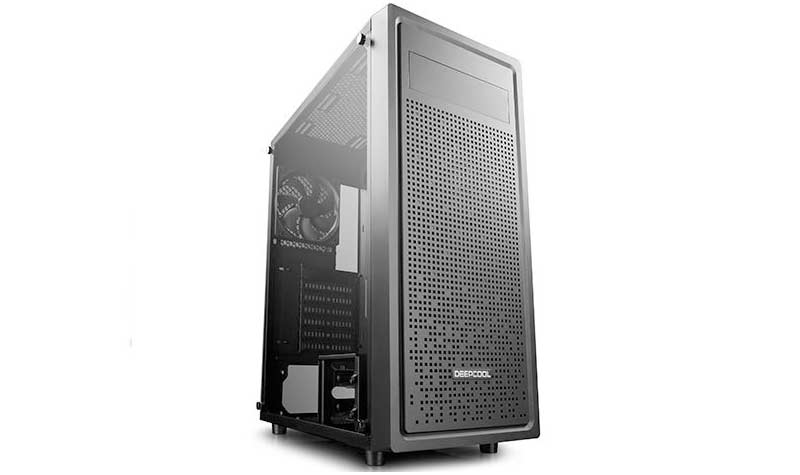
This is the housing for your PC. Nowadays, there are special design styles of PC cases from various brands, and for special purposes, such as gaming. There are lots of brands and designs out there, but one thing to keep in mind when buying a case is the form factor it can accommodate with respect to the motherboard. Major brands of PC cases include Be Quite!, NZXT, Thermaltake, Antec, Corsair, Cooler Master, Rosewill, DIYPC, and Fractal Design.
THE MONITOR
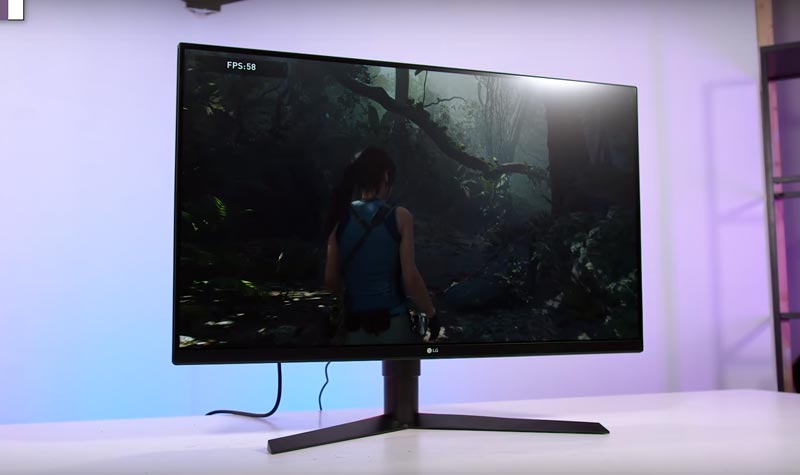
As the name implies, this is the peripheral that allows you to ‘monitor’ what is going on in your PC. It is also known as the display. The computer monitor is basically an output device, comes in various sizes and brands, and is indispensable.
Nowadays, display monitors are a big deal, because they can enhance your computing experience to a large extent. There are special monitors for special purposes, such as gaming, office productivity, and media professionals.
Monitors are classified according to the display technology they are manufactured with, such as Twisted Nematic, Vertical Alignment, and In-Plane Switching. You’ll also come across terms such as LED display, which is the backlighting type.
There are different sizes of monitors, such as 17 inches, 24 inches, 27 inches, 32 inches, etc. Monitors also have different resolutions, which are measured in pixels, such as 1280×720 pixels, 1920×1080 pixels, 2560×1440 pixels, and more.
Monitors also have what we call refresh rate, response time, aspect ratio, contrast ratio, and sync. You can check out our full review of the 10 best 24-inch monitors for more information. Major monitor brands include HP, ASUS, BenQ, LG, Samsung, Viewsonic, AOC, Acer, Sceptre, and NEC. When buying a monitor, consider your purpose, your needs, and your budget. Overall, a 23 or 24-inch monitor should serve most users.
KEYBOARD AND MOUSE
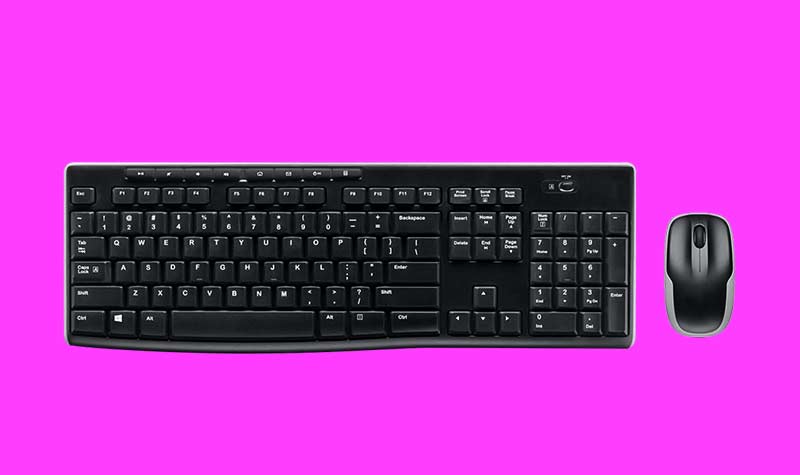
These are input devices, which allow you to control the PC. For those who are into gaming, the keyboard and mouse are a big deal. There are different brands out there, but basically, users may want to buy a wireless keyboard and mouse combo. Gamers usually go for special keyboards and mice designed exclusively for gaming.
When it comes to keyboards and mice, the two options are wired and wireless. Of course, the wireless type allows for more flexibility in usage. Weigh your options carefully before you buy.
RELATED ARTICLE

Build a PC for Music Production – All Budgets
We take you through a detailed guide on building a PC for music production for all budgets…
Some basic tools needed to build a PC
You need the following:
- Small and medium-sized Phillips and flat screwdrivers
- A 1/4″ nut driver
- Needle-nosed pliers or forceps
- Anti-static kit (mat and wristband)
- Heat sink thermal paste
- LED torchlight
- Workspace (no rug)
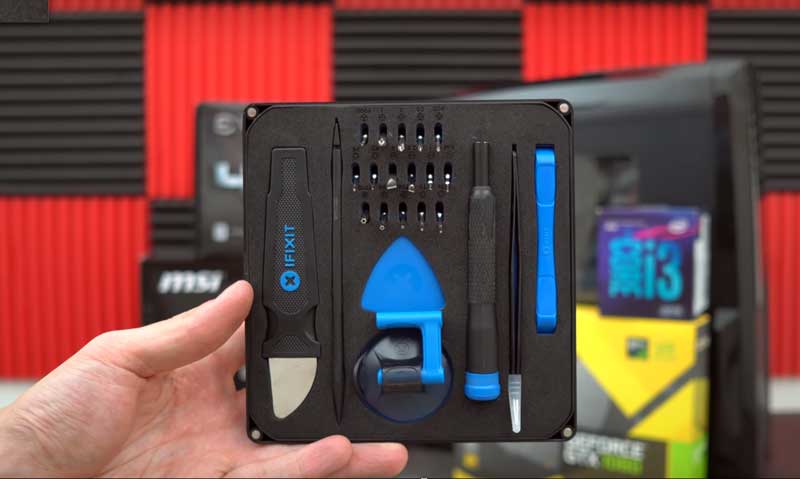
A set of screwdrivers and tools for a PC Build

Anti-Static Wrist Band
Apart from these, you need some patience and self-motivation, which is why this guide is written, to give you that extra push and let you know that you can do it. Click here to read how to build your PC step by step. We practically lead you by the hand to achieve this feat.
Can I build my own PC online?
You can. Our AI PC Builder tool helps you achieve just that. You can simply ask the tool to suggest a build, or select components for a specific use case, order the components, and when they arrive, you simply go ahead and build your PC.
For the best results, it is advisable to follow a guide, like the ones we have, to build your PC. That way, you can always come back and drop a comment if you happen to run into a challenge, and we’ll quickly help you out of the situation.
We have a couple of guides on how to build a PC for special purposes, such as a budget gaming PC, Video Editing PC, and 3D Animation and Rendering PC. These guides are authoritative, thorough, and easy to follow. You can also continue reading for guides on what components you need to build a PC for any purpose, including how to build your PC step by step.
Can I build my PC without a GPU?
Yes, you can build a PC without a dedicated graphics card. You don’t need a dedicated GPU if you buy some Intel and AMD processors, and also if you are not going to be doing some serious gaming on your PC.
For Intel processors, their integrated graphics chips are called Intel HD Graphics, Intel UHD Graphics, or Iris Graphics, while AMD integrated graphics are called APUs, short for Accelerated Processing Units.
It’s interesting to note that Intel desktop processors with integrated graphics include Intel’s dual-core Pentium, Core i3™, Core i5™, and some Core i7™ line of processors. When buying a processor from Intel with integrated graphics, look at the packaging for the Integrated Graphics feature.
For AMD, their integrated graphics are called Radeon Graphics or Radeon Vega Graphics. Their A-Series™ processors and Ryzen™ processors feature Radeon Graphics. On the other hand, their Athlon™ Processors usually feature Radeon Vega Graphics.
However, the AMD FX™ and Ryzen™ Threadripper series require a discreet graphics card. Always look for the Integrated Graphics feature on the CPU box packaging when making a purchase.
Conclusion
The PC is not as complicated as you can see. You can try our AI PC Builder and Cost Calculator. We’ve got other build guides for custom PCs you should check out. Our ultimate guides to building a PC step by step were written just for you. Let’s hear your story; go ahead and share your PC-building experience by dropping a comment here. We’ll be delighted to hear your story. Thanks for sticking around.

